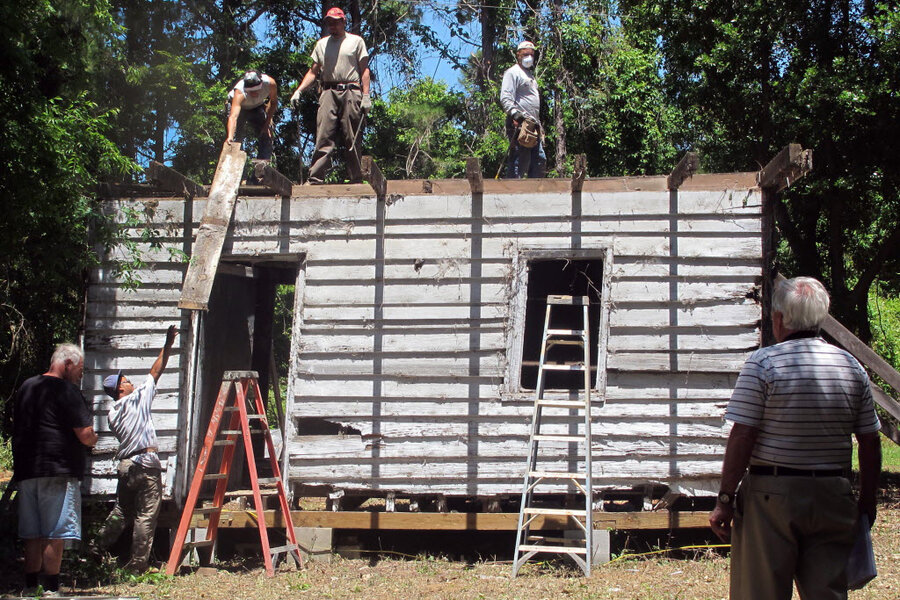Nonprofit works to preserve former slave dwellings
| Charleston, S.C.
Over the past three years, Joe McGill has slept in almost 40 former slave dwellings in a dozen states, hoping to draw attention to the need to preserve the structures and tell their stories.
Now he's expanding the effort and working to make the Slave Dwelling Project a nonprofit organization, with plans for a national conference next year. He said paperwork will be filed within the next two weeks to make it official.
"We tell a lot of our history through the buildings we choose to preserve and restore," McGill told The Associated Press in an interview at the main house at McLeod Plantation, which has a row of slave cabins. "If we want to tell the story of America, preserving these slave dwellings is a start to telling that whole story. Sleeping in them helps, but it's time to wake up now. It's time to give this project a purpose."
McGill, a program officer with the National Trust for Historic Preservation, said he hopes the nonprofit could create a pool of money to funds for property owners who might not have all the resources to repair an old dwelling.
McGill has filed paperwork to get his nonprofit going, and the conference is scheduled for September 2014 in Savannah, Ga. He said he hopes it will bring together people from around the country to share their stories of saving slave dwellings and trade notes on overcoming obstacles to their preservation.
When McGill's effort started, he wanted to preserve just cabins. Now, it's broadened to include all slave dwellings. In urban areas such as Charleston, many of those dwellings may still stand but are used as apartments or guest houses whose stories may not be told, McGill said.
McGill first slept in a slave cabin at Boone Hall Plantation near Charleston more than a decade ago as part of a program for The History Channel on the dispute over the Confederate flag that flew over the South Carolina Statehouse from the 1960s until 2000.
He returned to the slave dwelling project three years ago. Since then he has spread his sleeping bag in dwellings from Texas to Connecticut.
He said he remembers the eerie first night he slept in a cabin, hearing the sounds of dogs in the distance, conjuring in his mind the search for runaways during the years of slavery. Another time, he recalls waking up on Mother's Day thinking of the children who once lived in such cabins being sold from their mothers' arms.
There is no good estimate on how many slave quarters may still stand around the country, and helping to identify them is one of the objectives of the project. The census of 1860, the year before the Civil War broke out, listed almost 4 million people in slavery.
McGill said that since the effort started, one researcher was able to document at least 1,000. McGill said he frequently receives calls from people asking whether properties may have once housed slaves.
While McGill wants to preserve the dwellings, he said he does not think they should become museum pieces. He noted that structures once used as slave dwellings at both University of South Carolina and the University of Alabama are now used for such things as a computer services lab and storage.
"That's fine. One thing I try to get over to people in this program is we need to let buildings evolve," he said. "Let private owners let the buildings be what they want them to be. All I ask is that we preserve them and interpret them."
McGill said creating the nonprofit will help advance the effort to preserve the dwellings.
"Right now sleeping in them is all I can do, which is not a bad thing because it brings attention," he said.
Online: Slave Dwelling Project: https://www.facebook.com/TheSlaveDwellingProject





